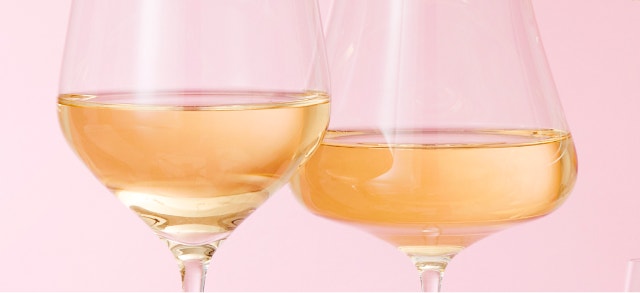Homemade pie crusts can intimidate even the most confident home bakers. Instructions like “do not overmix” are vague and terrifying. Buttery dough can split, crumble and make a mess of your kitchen.
The solution lies not in your pantry but in your liquor cabinet, some professional bakers say.
The Science Behind the Solution
“Vodka is the secret ingredient for a tender pie crust,” says Jessica Gavin, a culinary scientist. “The good news is the alcohol will vaporize in the oven, so the pie crust doesn’t have a lingering boozy taste.”
A bottle of 80-proof vodka contains 40% ethanol alcohol and 60% water. As a result, it hydrates dry ingredients like flour differently than if you’d used the same amount of water.
“When you make pie crust, the typical method is to add water to a mix of all-purpose wheat flour, butter and salt to make a cohesive dough,” says Irvin Lin, author of the cookbook Marbled, Swirled and Layered. “Flour has two different proteins in it, glutenins and gliadins, which form gluten when water is present.”
Gluten gives dough elasticity. If you’re baking, say, a loaf of bread, you want to develop and activate the gluten so the end result is chewy.
“But, for pastry dough like pie crust, you want just enough gluten to form so the dough holds together, but not so much gluten that you develop a tough and hard crust,” says Lin. “Vodka allows you to wet the dry ingredients enough so it forms a dough that is easy to roll out and use, but has less water in it, so less gluten will form.”
The technique was developed by J. Kenji López-Alt, author of The Food Lab: Better Home Cooking Through Science and The Wok: Recipes and Techniques, for Cook’s Illustrated back in 2007.
“We were trying to develop a new pie crust recipe for the holidays,” says López-Alt. “The goal was to make a pie crust that’s foolproof, that’s very easy for people to roll out, even for people who’ve never made pie crust before, and with results that are still flaky and tender.”
López-Alt found that dough made with vodka is stickier and tackier than most homemade pie crusts, which tend to be dry and prone to crumbling. And that’s a good thing.
“A lot of people, the problem they have with pie crust is if they make it with just enough water so that it stays tender, then when they try to roll it out, it cracks,” says López-Alt. “For people who haven’t made a lot of pies, the cracking can be frustrating, and it turns a lot of people off from making pies.”
Part of the problem lies in how many recipes are written. To accommodate different climates, flours and bakers, instructions include exact measures of dry ingredients, but the correct amount of water can range from two tablespoons to a quarter-cup.
“They leave it up to you to decide how much to add,” says Andrew Janjigian, a writer, recipe developer and baking instructor. “That throws people off because they don’t know yet if it’s wet enough or still too dry. The vodka is a little bit of insurance. You make a dough that’s obviously wet in the machine or bowl, and so there’s some guarantee that you’re not overdoing it.”
This type of pie crust might not be perfect for everyone, of course. Janjigian prefers to work with more structured doughs, and Gavin feels that it’s better suited to delicate cream pies and meringues than desserts with heavy fruit fillings. Still, for those uncertain of their pastry capabilities, it remains a foolproof way to create tender, flaky crust.
Other Possible Liquors
Not a vodka fan? No problem, López-Alt says. He tested it with bourbon, Cognac, tequila, vodka and gin, and all worked beautifully. The amount of liquor is so small that it doesn’t affect the flavor of your finished pie, either.
“If you have bourbon at home you can go ahead and use it. But you shouldn’t go out of your way to try to match the spirit to the pie filling.”
The Vodka Pie Crust Recipe
This recipe is adapted from López-Alt’s original for Cook’s Illustrated
Ingredients
- 2 ½ cups all purpose flour
- 1 teaspoon kosher salt
- 2 tablespoons plus 1 teaspoon granulated sugar
- 14 tablespoons (1 ¾ sticks) unsalted butter, cold, cut into cubes
- 4 tablespoons (¼ cup) vegetable shortening, chilled and cubed
- ¼ cup ice water
- ¼ cup cold vodka, divided
Directions
1. Place flour, salt and sugar in the bowl of a food processor fitted with the blade attachment and pulse 2–3 times to combine.
2. Add cubed butter and shortening to the bowl of the food processor and pulse 2-4 times, until pea-sized clumps start to form.
3. Pour water and 1–2 tablespoons of vodka into the spout of the food processor so it slowly drizzles over the mixture, pulsing 2–3 times to combine.

4. Using your fingertips, feel if the dough is crumbly. If so, add the rest of the vodka through the spout of the food processor, pulsing 1–2 more times. If it feels sticky and holds together when you pinch it between your fingers, reserve the rest of the vodka for another purpose.

5. Divide the dough into two equal pieces and press each into a 4-inch disk. Wrap in plastic wrap and refrigerate for at least one hour and up to two days.

6. When you’re ready to use your pie crusts, roll each disk out on a lightly floured surface to an approximately 11-inch circle.

7. Transfer to a 9-inch pie dish and press or crimp ends. Chill, uncovered, in the refrigerator for at least one hour before baking in your favorite pie recipe.







